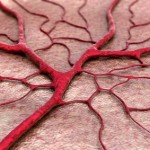Visualizing Calcified Plaques with Virtual Intravascular Endoscopy

Searching for screening techniques for the early detection of coronary artery disease, the leading cause of death in the Western world, represents one of the greatest challenges in the scientific field. While the occurrence of cardiovascular disease can be detected through imaging modalities such as coronary CT angiography, the presence of calcified plaques in the…
The Role of Microvasculature in Myocardial Perfusion

Myocardial perfusion is the process by which blood is supplied to the heart muscle from the left and right coronary arteries. Exploring the structure of microvascular trees in a detailed way will provide a deeper understanding of the mechanisms that rule myocardial perfusion. Researchers from Western University, London, investigated arteriolar trees, the pre-capillary levels of the microvasculature,…
Stem Cells Contribute to Myocardial Repair after Renal Hypertension

The heart and the kidneys work very closely together: kidneys control blood pressure and filter the blood coming from the heart, eliminating the excess of chemicals and fluids in the form of urine. Several studies have shown that heart failure is a risk factor for renal disease and the two conditions may significantly impact each other…
The Impact of Coronary Artery Stenosis on Renal Injury

Coronary artery disease occurs when the arteries that supply blood to the heart become hardened and narrowed (stenosis) due to the accumulation of cholesterol and other fatty substances on their inner walls. The restriction in blood supply causes a shortage of oxygen and glucose to the heart that may not only impact the myocardial tissue,…
Remote Ischemic Preconditioning: a Neuroprotective Strategy

The small number of effective options to treat neurological dysfunctions following coronary artery bypass grafting provides a strong impetus for defining strategies that may reduce their incidence. Ischemic preconditioning offers a powerful form of endogenous protection against myocardial infarction. It is performed alternating brief cycles of nonlethal ischemia – restriction in blood supply to tissues…
Inducing Angiogenesis in Chronic Vascular Occlusion

Gene therapy and cell therapy belong to a novel therapeutic branch of modern medicine, the goals of which are repairing the direct cause of genetic diseases in the DNA and restoring damaged tissues or organs, respectively. In chronic vascular occlusion, stem cell therapy can be used to help regenerate myocardial tissues and return the contractile function of the…
 AnalyzeDirect
AnalyzeDirect